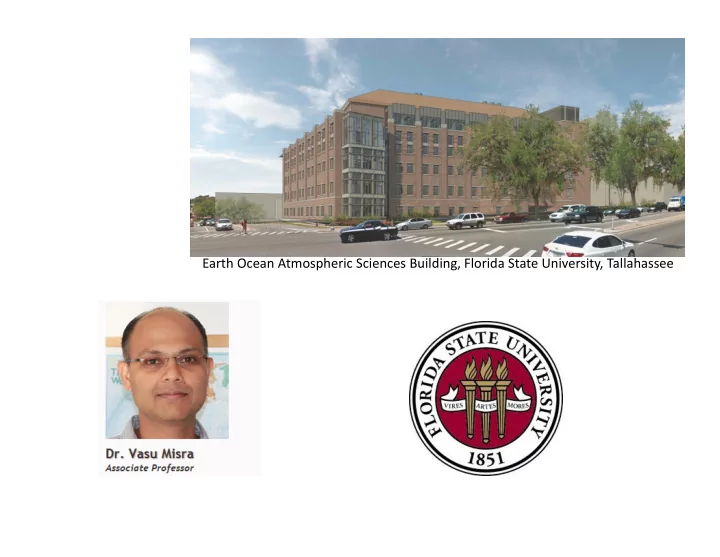

Earth Ocean Atmospheric Sciences Building, Florida State University, Tallahassee
Urban water supply and demand in a changing demography
• The three states account for 27% (81 million) of the current US population • They account for 48% of US population growth between 2014-15 (rebounding economy; rapid growth in first and second generation immigrants) • By 2030 the population is projected to exceed 100 million
Challenges for urban water supply in Florida • Getting supply of fresh water to meet the growing demand • Meeting the standards of water quality and reliable supply for a fragile (senior) population in adverse weather • Demands of power generation under adverse weather
Clusters analysis of North Atlantic Tropical Cyclones Using HURDAT from 1950-2007 The clusters are based on storm position and time Storms in clusters 1 and 2 form farther north than 3 and 4 Storms in clusters 1 and 3 form farther east than 2 and 4 Cluster 1 has pronounced northward track Cluster 4 has pronounced westward track Cluster 2 form almost exclusively in From Kossin et al. (2010) GoM
1. There is a clear regime shift beginning in early to mid- 1980’s 2. As the total annual rate of storms have increased in the Atlantic, post-1980 there is proportionately more cluster 3 and 4 storms compared to clusters 1 and 2. 3. That is more tropical only storms are increasing and baroclinically initiated or enhanced storms are decreasing post 1980. 4. This regime shift has occurred within the period of regular operational polar (July 1965) and geo-stationary (June 1977) orbiting satellite observations Kossin et al. 2010
Kossin et al. 2010 1. Clusters 3 and 4 form over regions of positive SST trends 2. Cluster 2 genesis is colocated with region that is experiencing no upward SST trend (or a weak cooling SST trend) 3. The main genesis region of cluster 1 spans region of both warming and cooling SST trends and the overall trend is positive but significantly weaker than those found in clusters 3 and 4.
From SECC 2015
Humidity impact on differences in Tmax and Tmin
Conclusions • In a changing and growing population the vulnerability to adverse weather and climate increases • Growing coastal population exposes vulnerability to hurricane impact • Growing inland senior population exposes vulnerability to heat stress related issues • Same adverse weather of the past will have different impact in future • Urban water suppliers have to plan – for sudden spikes in water demand for power generation – Reliable water supply in adverse conditions to sustain fragile population
Recommend
More recommend